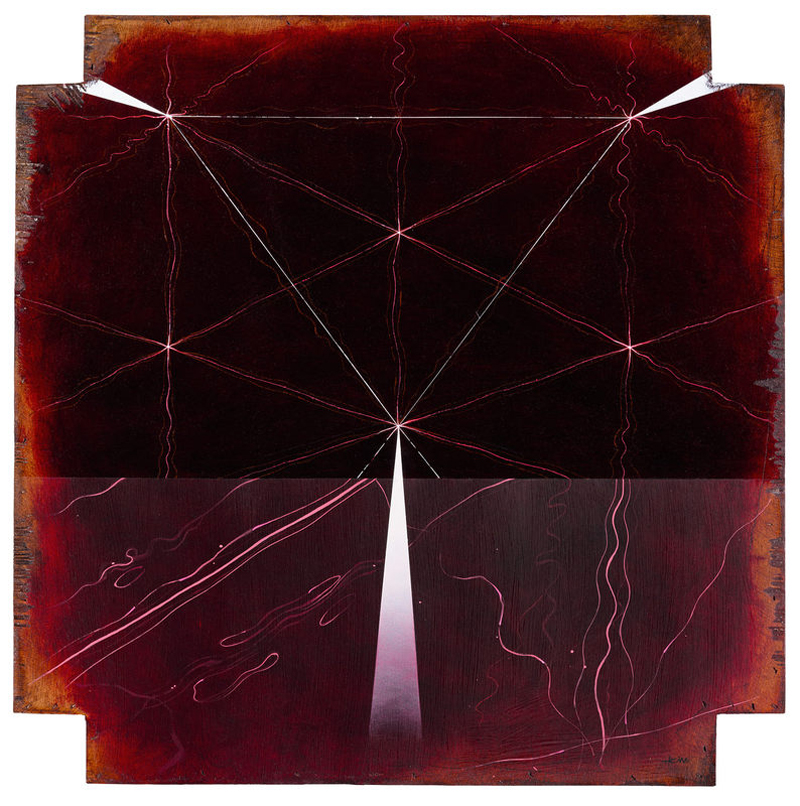
Photograph: © Patrick Howe
Personality’s pictorial escape
“May your life be guided by curiosity and a
passion to see the world with fresh eyes.”
Patrick Howe is an artist, author and educator. He was born in Portland, Oregon, in 1951 and has been living in Seattle, Washington, since 1981. His art theory book, The Awakening Artist: Madness and Spiritual Awakening in Art, was nominated for the Robert Motherwell Book Award for outstanding and original thinking on the topic of Modernism in Art.
Patrick also owned a successful art gallery in Seattle for 10 years (2004–2014), where he sold his artwork, which had an easy commercial appeal. After the gallery closed, he was able to pursue other artistic concepts, which lead to Post Personalism, founded together with Christopher Gasper.
In this week’s guest post for The Culturium, Patrick outlines his vision of transcending the personal ego through reconnecting with the oneness of the universe, beautifully illustrated by his stunning art.
Post Personalism is an art movement that transcends egocentricity and is based in the awareness that the artist and creativity are something the whole universe is doing.
In the Post Personal Project, Patrick Howe uses the lens of Post Personalism through which to view the issues and problems of self-centricity, which he believes is at the root of all social, political and individual problems.
Poet T.S. Eliot said, ‘True poetry is not the expression of personality, but an escape from personality.’
Likewise, the Post Personal Project is not about personality, but coming from a deeper place than personality alone.
Personality comes from the word ‘persona’, which means mask or our outer appearance. Post Personalism looks behind the mask and brings attention to the authentic, beautiful being that is our true identity.
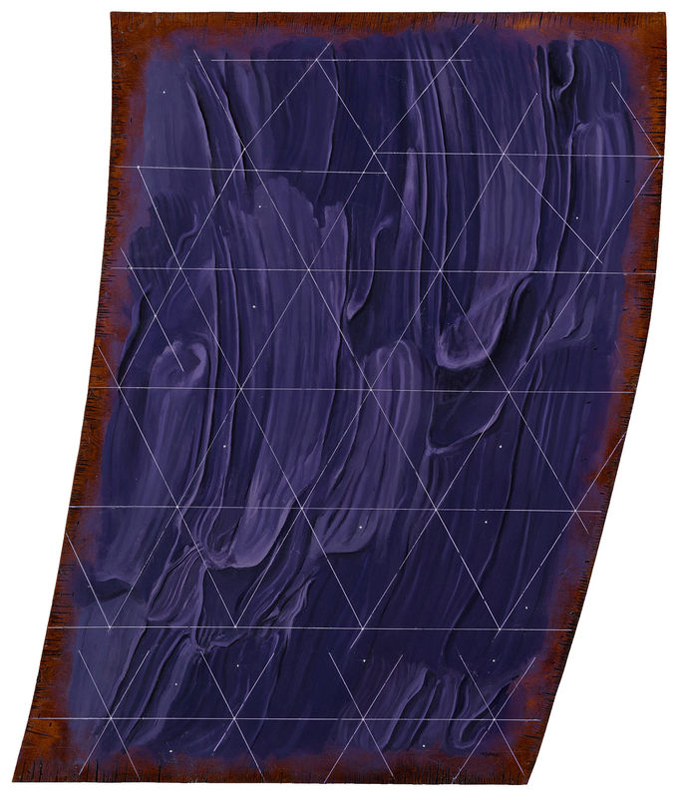
Photograph: © Patrick Howe
Post Personal Ideas Found in Culture and History
EINSTEIN SAID, “The true value of a human being can be found in the degree to which he or she has attained liberation from the self.” Therefore, the Post Personalist artist asks how does an artist become liberated in order to become of truer artistic value?
Liberation From the Self
Artists Morris Graves and John Cage explored liberation from the self through Zen Buddhism and that influenced their artwork. Mark Tobey explored liberation through the universality of Bahai and that also influenced his artwork. Many other artists found liberation from the self through the daily challenges that life brought them. Post Personalism explores liberation by also going beyond the concept of self-centricity.
The Evolutionary Order
Post Personalism embodies the notion that an artist is not an isolated entity separated from the environment, others, or him or herself. It holds the notion that artistic creativity is aligned with, one with, the same creativity that has created all forms of life. The Post Personalist artist aspires to participate in that higher evolutionary order.
Historical Roots of Post Personalism
Many artists throughout history have had a perspective similar to the Post Personalist. And though they were not advocates of Post Personalism by name, they nevertheless embodied some of the principles of Post Personalism. This is evidenced by some of the artwork and statements they made. These artists include Morris Graves, John Cage, Mark Tobey, Isamu Naguchi, Constantine Brancusi, George Inness, and many others.
Post Personalism attempts to bring together their like-minded philosophies even though they lived in different times, cultures and created diverse forms of art. The timeless philosophical thread they shared was a sense that they were a part of something larger than themselves; they were part of a universal order that in some way was expressed through them and their artwork.
Making an Apple Pie
Astrophysicist Carl Sagan expressed it this way, “If you wish to make an apple pie from scratch, you must first make a universe,” suggesting that the apparent intelligence of the universe expresses itself even in the making of an apple pie. The word “apple pie” could easily be replaced with the word “art”.
Transcending the Human Condition
While the styles of these great artists are wonderful, it is the universality of their artistic philosophies that has appeal to the Post Personalist. That universality was frequently expressed through their artwork. Furthermore, each artist aspired to transcend the conventional human conditioning of their day and to communicate that effort through their art. However, the Post Personalist does not wish to emulate or copy the styles of artists of the past but to further their perennial universal philosophical aspirations in the present.
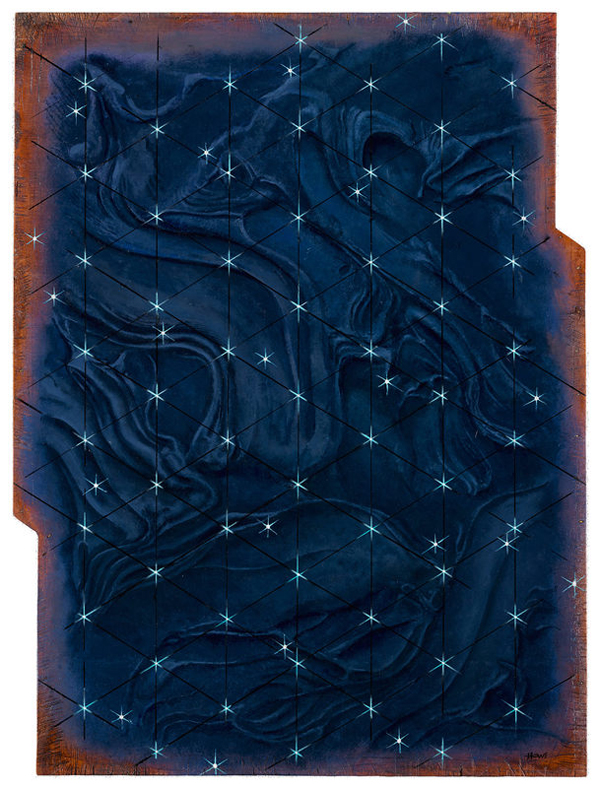
Photograph: © Patrick Howe
Comparing Surrealism to Post Personalism
Post Personalism shares no direct comparison to Surrealism; however, a sideways comparison can offer an insight into understanding the Post Personalist approach. Surrealism was inspired by developments in human psychology in the 1920s. The Surrealists communicated in their art what they believed to be the appearance of the human subconscious. They made works that resembled the illogical distortions of the dream state.
Where the comparison to the Post Personal Project is relevant, however, is that the Surrealist art movement was built around a specific subject matter. That subject matter was the human subconscious. Similarly, Post Personal art is built around a specific subject matter. That subject matter is a higher state of consciousness. Some might call that higher state enlightenment. Others might say that a higher state of social, political and environmental consciousness is a down-to-earth and practical necessity for the survival of our species on the planet at this time. The Post Personal Project is not limited to either interpretation.
Post Personalism Explores a Content, not a Style
While both Surrealism and Post Personal ideas bring artistic attention to different aspects of human consciousness, the Surrealists had a clearly identifiable style. They had dripping clocks and so forth. The Post Personalist, however, is not necessarily style oriented. It is only content-oriented, which means there may never be a uniquely Post Personal style because any artist could potentially express Post Personal concepts through whatever style was suitable.
Post Personal Influences
While Post Personalism has also been inspired by certain Eastern and Western philosophies, it does not promote any religious practices or religious themes. Post Personalism has been inspired by many artists, philosophers and thinkers who have explored the nature of human identity.
The Post Personal Project
In the Post Personal Project exhibitions, Patrick Howe uses the lens of Post Personalism through which to focus on the issues of human identity, such as self-centricity, which he believes lies at the root of all social, political and individual problems.
Post Personal Roots in History
The chart below illustrates the stages of personal liberation throughout history. It is a broad generalization and there are exceptions to the rule. Nevertheless, the chart illustrates in broad strokes the evolution of the Post Personal perspective when applied to history.
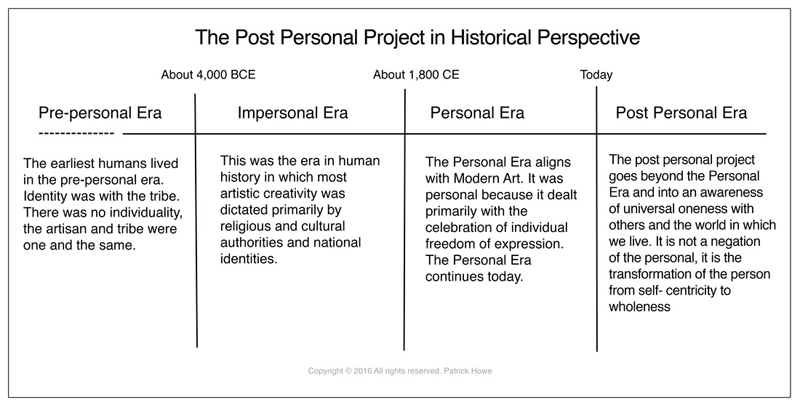
Photograph: © Patrick Howe
A Comparative Analysis of the Post Personal Project
Bipolar Disorder, Self-Worth and Post Personalism
Clinical bipolar disorder, or manic depression, is a mental illness. Its symptoms include extreme high and low mood swings. Feelings of ecstatic self-worth quickly dissolve into self-loathing. It is a disease that requires specialized medical attention.
Most people have high and low mood swings to a lesser degree but are not considered mentally ill. Some humans experience a predominantly high sense of self-esteem while others may experience a predominantly low sense of self-esteem.
For so-called normal people, swings in feelings of self-worth are not caused by a disease. When examined closely we see they are caused by our mentally held opinions. It is our opinions about our self-worth that make us feel lesser or greater than others.
Theoretically then, if we were to detach from our opinions of being greater or lesser, then we would have no high or low self-worth. We would have no healthy or unhealthy self-esteem. We would have no strong or weak ego. We would simply “be”. And that would be perfect. If we held no opinion about ourselves and others, then however we and others are would be fine.
The Post Personal Project does not take opinions about itself and others too seriously. This flexibility and openness free us to enjoy being. When we are simply being, without attachment to our opinions, there is no need for high or low self-esteem. Your worth is already inherent within you. You are not greater or lesser. You are perfect exactly as you are.
With this in mind, a Post Personal artist might ask: how would I create an artwork series that communicates the perfection that is hidden within apparent imperfection.
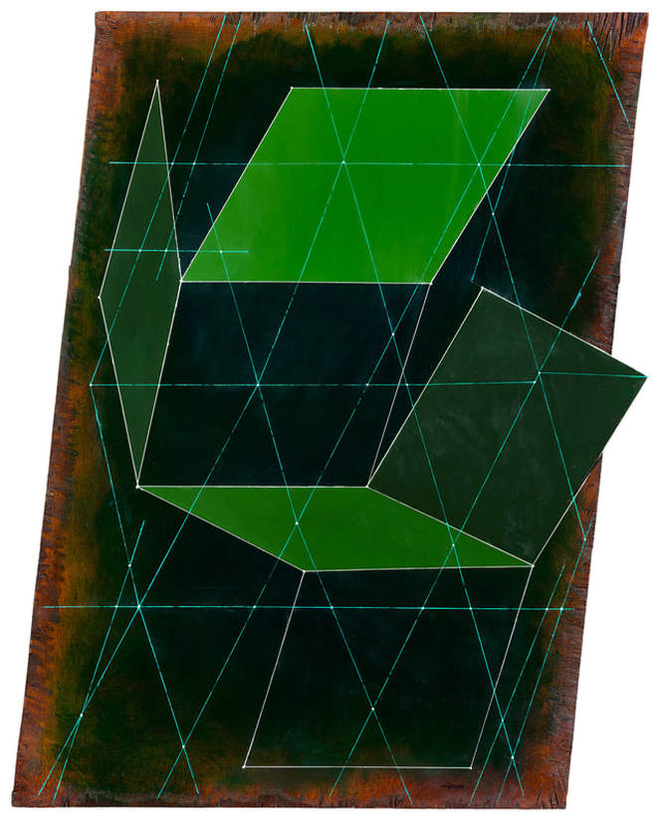
Photograph: © Patrick Howe
Freud, the Ego and Post Personalism
Today the word ego has become synonymous with self-worth, self-importance and self-esteem. It is believed that if you have a sense of high self-worth, then you have a strong ego. If you have a low sense of self-worth then you have a weak ego.
However, from a Freudian point of view, that particular use of the word ego is incorrect. According to Sigmund Freud (1856–1939), the human mind is divided into three compartments—the Id, the Ego and the Super Ego. Freud believed that the Id is the reptilian part of the human brain, which instinctively desires to procreate and survive for itself regardless of others. The Super-Ego, on the other hand, is formed by familial, societal and cultural conditioning that creates social order. The Ego, according to Freud, operates just below the conscious level of awareness. Its job is to moderate or negotiate, the opposing forces of the Id and the Super-Ego in order for a human being to function as a normal, law-abiding member of society.
Freud did not intend for the word ego to be associated with a person’s degree of self-worth. The self-worth definition of ego sprang out of popular psychology. A boastful, self-absorbed person is thought to have a big ego, and a meek person is thought to have a small or weak ego.
Post Personalism does not define other people or their behaviour by the compartments of their psychological makeup. It focuses instead on the beingness of oneself and others. To a Post Personalist, the ego, great or small, is not a bad thing, it’s an obsolete thing.
Eastern Philosophy and Post Personalism
In Eastern philosophical terms, the ego is the unobserved mind. The unobserved mind is when thoughts and feelings happen without the person being aware of them, which in turn motivates the mental, emotional and behavioural states of the person. It is the nature of the unobserved mind to form rigid concepts. It also observes others and the environment as separate from itself. On the other hand, the non-egoic person is more aware of what they think and feel and recognizes their essential oneness with others and the environment. Likewise, Post Personalist artists are interested in transcending self-centricity and in exploring art forms through which to communicate that.
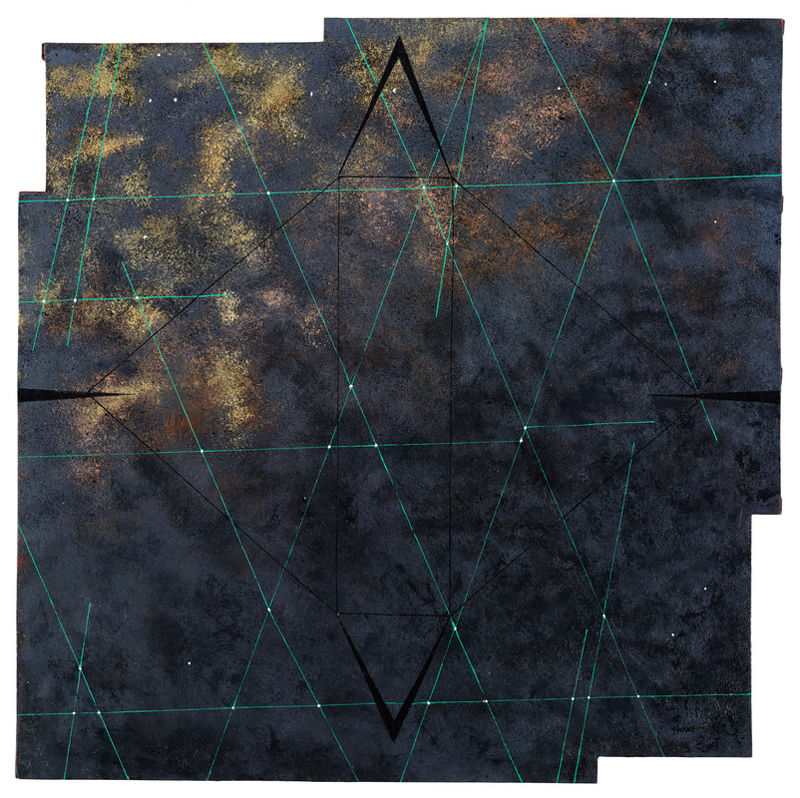
Photograph: © Patrick Howe
Rational Self Interest (Egoism) and Post Personalism
Rational Self Interest was promoted by Russian-born American novelist and philosopher, Ayn Rand (1905–1982). The theory of Rational Self Interest states that if a person takes action on what is believed to be right and true for oneself alone, regardless of others, they will have the greatest possibility of personal material success and happiness.
It is possible that Rational Self Interest may have served a purpose in simpler times when societies needed to be built by the brute force of egoic kings, emperors and uncompassionate capitalists but times have changed. Brute force is no longer needed. The next step in human evolution requires the tools and strategies of compassion.
Furthermore, the problem with Rational Self Interest is that it has never proven to produce lasting success and happiness for anyone as it claims. It is apparently called “Rational” Self Interest in order to make self-centredness appear rational, reasonable, practical and good for everyone. But in reality, when examined closely, it is merely an intellectual attempt to justify the existence of the ego, which sees others and the environment as separate from itself and as objects; merely resources for the consumption of the ego’s self-interest. Post Personalism is the opposite. Its so-called self-interest is oneness, which is true self-interest. And the true self-interest of one is always in the true self-interest of others.
Post Personalism is not Collectivism
Collectivism is the notion that a group of human beings is more capable of producing truer or more rational solutions than a single individual. The belief is that the sheer numbers of people who think the same makes something right. However, whatever a group of humans do is always a reflection of their collective consciousness. A group of egoic humans would not produce truer or enlightened ideas. It would produce separation and negativity because that is the nature of the ego. Nationalism, or tribalism, is a form of collective thinking or collective ego that has historically produced violence.
On the other hand, the Post Personal Project is about each individual discovering the truth for themselves within. There is no group thinking—no “group soup”. There is no doctrine to believe in. The common thread shared by artists of Post Personalism is their individual passion and experience of egoless oneness, and out of that may arise truly inspired solutions for the betterment of all.
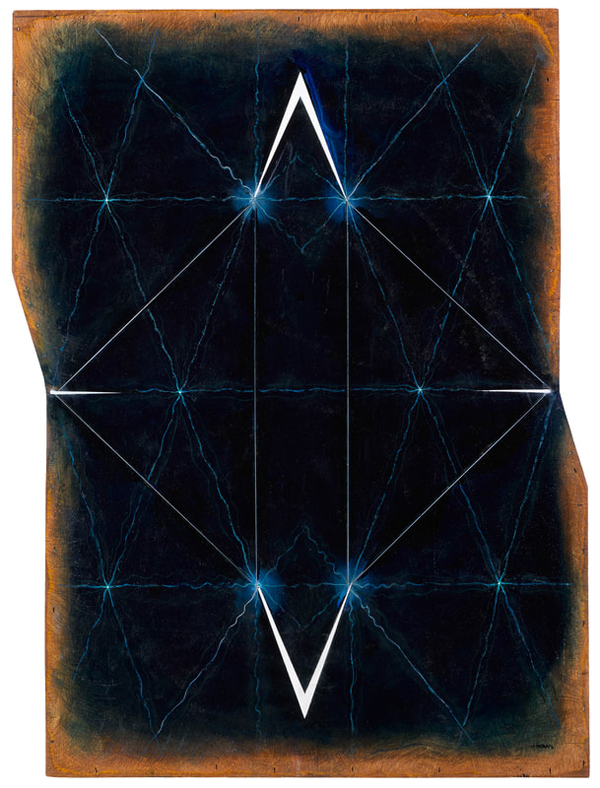
Photograph: © Patrick Howe
Manifesto
Post Personalism explores the possibility of art being made that is not merely personally referential. According to Post Personalism, we live in a personal era of human history, which embodies all of Modernism and celebrates freedom of personal expression. Post Personalism acknowledges personal expression too, but primarily explores the universal oneness that transcends the mere personal. Post Personalism develops intelligent and forward-thinking concepts that emerge out of that enquiry.
For art to continue evolving toward a deeper or higher state of human consciousness, it must move in the direction of universal oneness. It is true that art today may continue evolving technologically and in style and technique but those lesser forms of evolution alone will not take us deeper into our shared oneness.
Post Personalism is about universal oneness and is now a critical imperative. Anything other than universal oneness is now part of the old reality, the old consciousness. Post Personalism creates art forms that address this theme directly.
Post Personalism is an art movement that transcends egocentric creativity and is based in the awareness that true artistic creativity is an expression of the greater whole.
Post Personalism is a contemporary approach that engages awakened concepts in relation to human identity and artistic creativity.
The word “personality” comes from the word “persona”, which comes from the Greek meaning for mask, or our outer appearance. Post Personalism looks behind the mask and brings attention to the authentic being that is our true identity.
Post Personalism communicates artistic themes relating to the evolution of human consciousness. It postulates that humanity has the potential to move beyond the egocentric stage and into a non-egoic stage. The non-egoic stage is an emerging new consciousness.
Post Personalism uses art forms to communicate attributes of the emerging new consciousness.
Post Personalism is an artistic platform that enables an exploration of the evolution of human consciousness through art.
“Post Personal” does not mean a disregard of the personal self, it means coming after, or going beyond, or going deeper than the personal self. It is not impersonal because it is compassionate. It is the next step. Post Personalism is about the here and now, it is pro presence.
Post Personalism does not promote any doctrine or belief system. Instead, it is based on an open and flexible framework of oneness and seeks to go deeper than the status-quo state of human consciousness today.
Post Notes
- Patrick Howe’s website
- John Cage: Silence
- Carl Gustav Jung: The Red Book, Liber Novus
- Wassily Kandinsky: Concerning the Spiritual in Art
- Kahlil Gibran: Poet, Painter, Prophet
- Laurie Stern: Spirituality Expressed Through the Beauty of Art
- Guy Laramée: Fraîcheur
- Agnes Martin: Writings
- Rashid Maxwell: To Save the Planet With a Paintbrush
- Tal Waldman: Directed Randomness

